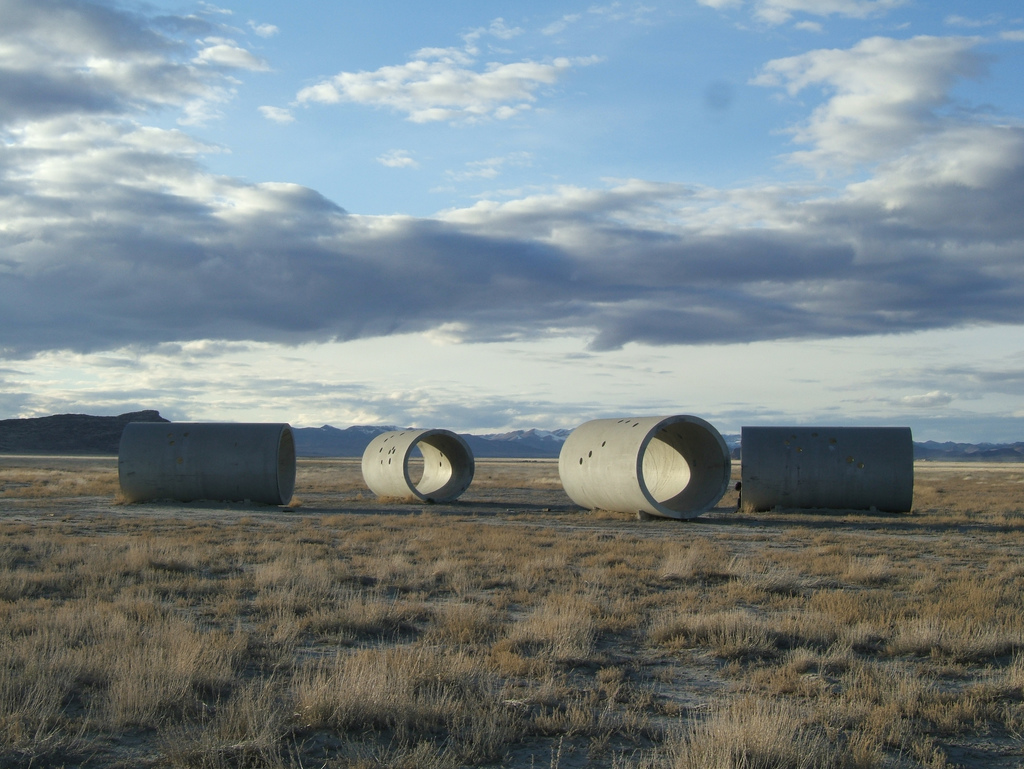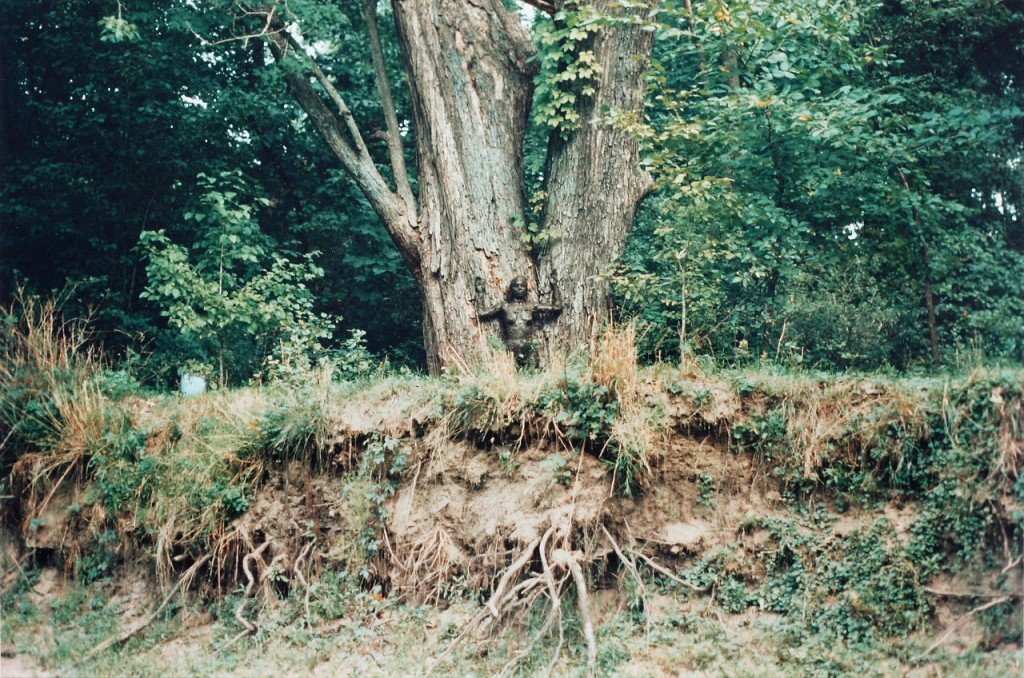Ode to Nancy Holt and a Powerful Earth by Kelly Johnson
|
I recently moved to Baltimore from Texas, anxious that the cold and concrete would eliminate my connection with nature. But everyday I notice an unexpected trace of the natural earth in the city: the shocking pink of the roses in my neighbors yard, the will of the pale yellow grass stretching out from under melting snow, the brightest, clearest, largest moons I’ve ever seen lighting up the dark night sky. Our environment reaches out to us over and over again, saying, HEY! YOU! Remember what an opportunity this is? To be alive? Remember how we’re all connected, and how everything here belongs to everyone. You are here for me and I’m here for you and the water and the sky and the stars and the ground circulate a life force of energy that never separates. One is all, all is one. How do we remember? Since the passing of the pioneering land artist Nancy Holt last February, I’ve been thinking about the role of the artist amidst all this forgetting. Do artists have a responsibility and ability to bring us back to an awareness of our environment, of our ultimate interconnectedness? Can artists use their creative powers to reconnect us to our often disconnected world? How do female artists in particular fit in to this practice? Holt’s most well known work, “Sun Tunnels” (1976), set in the Great Basin Desert in Utah, recovers the wonder that is missing from our everyday experience of the environment. As described by the Center for Land Use Interpretation, the installation “consists of four large concrete tubes, laid out in the desert in an open X configuration. The nine foot diameter, 18 foot long ‘tunnels’ are pierced by holes of varying size that correspond with the pattern of selected celestial constellations. There is a tunnel for Draco, Perseus, Columba and Capricorn. The tunnels [also] line up with the rising and falling sun of the summer and winter solstices.” Anyone who has taken a road trip across the deserts of the American West knows the atmosphere of mysterious awe that exists there. Its timeless vastness is enchanting. That type of openness cannot be experienced elsewhere in the current architecture of modern life. Out in the desert, the soul opens up and you feel like you can breathe again, like you’re connected again, like you’ve been found. You feel special to be alive, to be given a chance to experience all this. It seems impossible, but you’re here. Perhaps that is what Holt felt when she arrived, and decided to name that experience with the construction of her tunnels. Many people make pilgrimages to this installation, particularly during the solstices to see astronomy, art, and energies of the universe align. It is a uniquely spiritual encounter with the environment, a place to convene socially to have a soul-nourishing experience provided by already existing natural phenomena of space, both physical and cosmic. I haven’t visited “Sun Tunnels” yet, but even from afar I think it’s magical. When I first heard about the installation, I perceived it as a material manifestation of poetry. It is a reminder that there are lines of connection spinning outward from our bodies to the sun and stars and back, making us forget our limited, mortal existence, and projecting us into the infinite energies and cycles of the universe. In the 70s, female artists working with earth as their medium inevitably intersected contemporary discussions of feminism and environmentalism. There is a woman-nature/man-culture binary that often limits this conversation to touchy-feely, intuitive (female) wisdom pitted against rational, provable (male) logic. Each side knows that their positionality cannot exist without the opposition of the other, that there is no such thing as pure intuition or pure reason. Neither offers a final source of truth. But the legacy of the combination of feminism, environmentalism, and art is a powerful one. The movement responds to our bodied experiences, our expanded modes of awareness and explanation of realities, which remain largely ignored by a society that values the mental and the physical in strict separation. Holt’s “Sun Tunnels” make me think of Ana Mendieta and her connection with the Earth both through her art and her body. Her “Siluetas” (1973-77) and “Tree of Life” (1976) series show her body’s trace or integration within various natural landscapes. Requiring her body to be present in these works is a way to bring our attention back to a consciousness of the interconnected experience we are always having with our environment—whether that be grass, dirt, sky, or even concrete. We are permeable beings, intercepting various forces of the spaces we inhabit through our bodies. In this light, Holt’s installation channels our bodily experience toward an intimate communion with the earth and universe. It’s not a scientific view of the cosmos, but a relational one. She eliminates the unfathomable distance between the viewer and the stars with those strategically placed viewfinders so that there is not an automated attempt to understand, but perhaps finally an impetus to feel. Why is the female body the one that is continuously present to her earth? The products of male artists of the land art generation do not accomplish this elegant, referential sentiment about a reverent union with our environment. Robert Smithson, Michael Heizer, and Walter De Maria were all about mastering, harnessing, reshaping, and displacing elements of Earth. There is something simple and honorary to Holt’s art, which points back to the earth’s autonomy to reveal its own power—a power that is ultimately beyond human understanding and manipulation, a power that the body should feel fully and continuously rediscover with great awe and deep appreciation.
Kelly Johnson is a writer and independent curator from Texas, currently pursuing her MFA in curatorial practice at Maryland Institute College of Art (MICA) in Baltimore, MD. |

